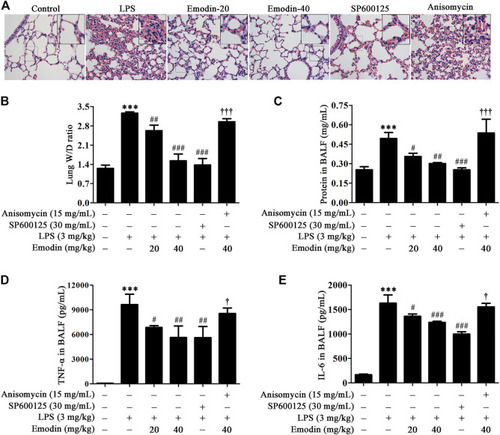- Title
-
Emodin Protects Against Lipopolysaccharide-Induced Acute Lung Injury via the JNK/Nur77/c-Jun Signaling Pathway
- Authors
- Xie, P., Yan, L.J., Zhou, H.L., Cao, H.H., Zheng, Y.R., Lu, Z.B., Yang, H.Y., Ma, J.M., Chen, Y.Y., Huo, C., Tian, C., Liu, J.S., Yu, L.Z.
- Source
- Full text @ Front Pharmacol
|
Emodin suppresses inflammatory response and oxidative stress PHENOTYPE:
|
|
Emodin inhibits LPS-induced inflammation |
|
Emodin regulates the Nur77/c-Jun pathway in LPS-stimulated RAW264.7 cells by inhibiting the JNK pathway. |
|
Emodin suppresses LPS-induced activation of c-Jun through regulation of Nur77. |
|
Emodin inhibits LPS-induced acute lung injury (ALI) in mice |
|
|






